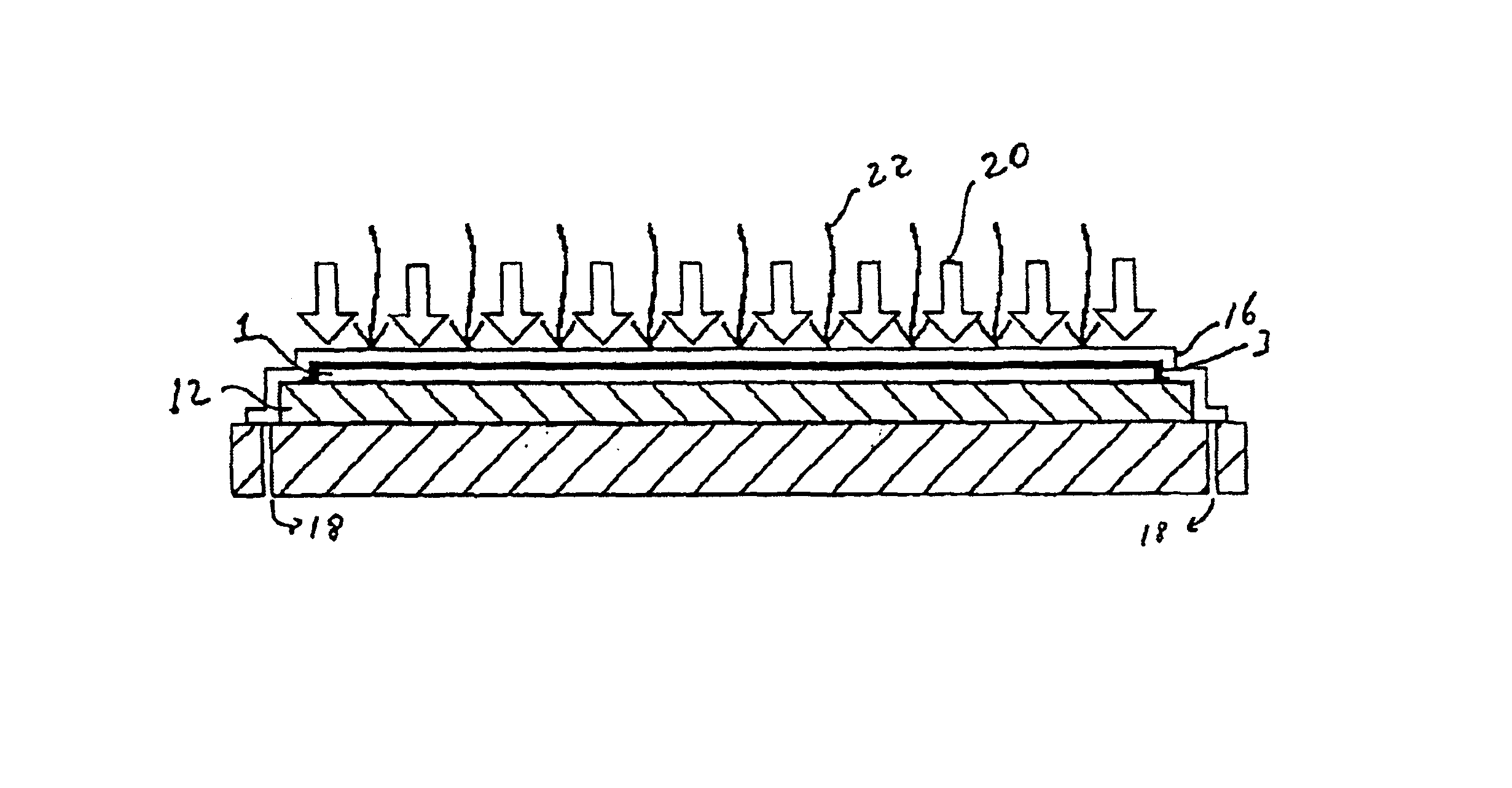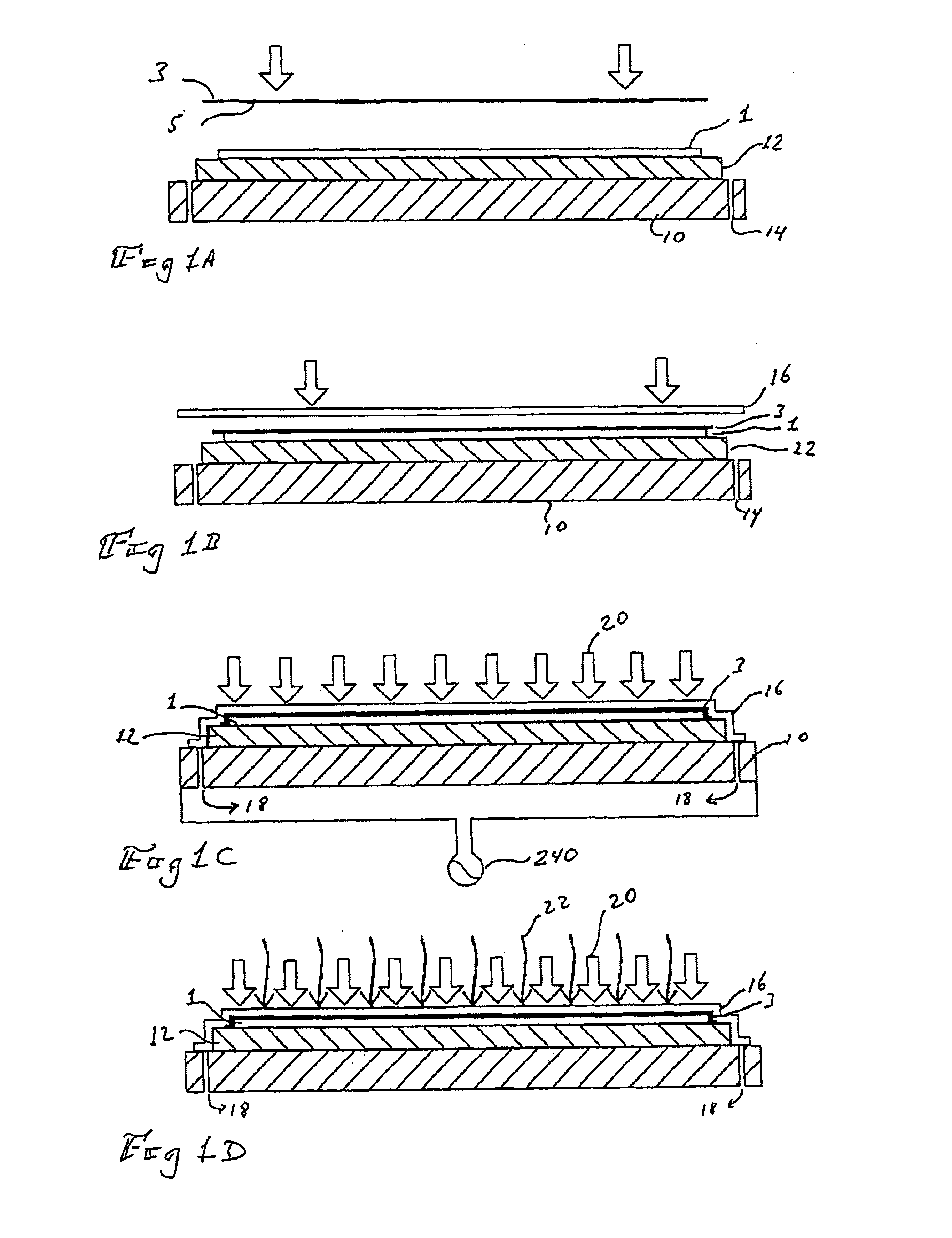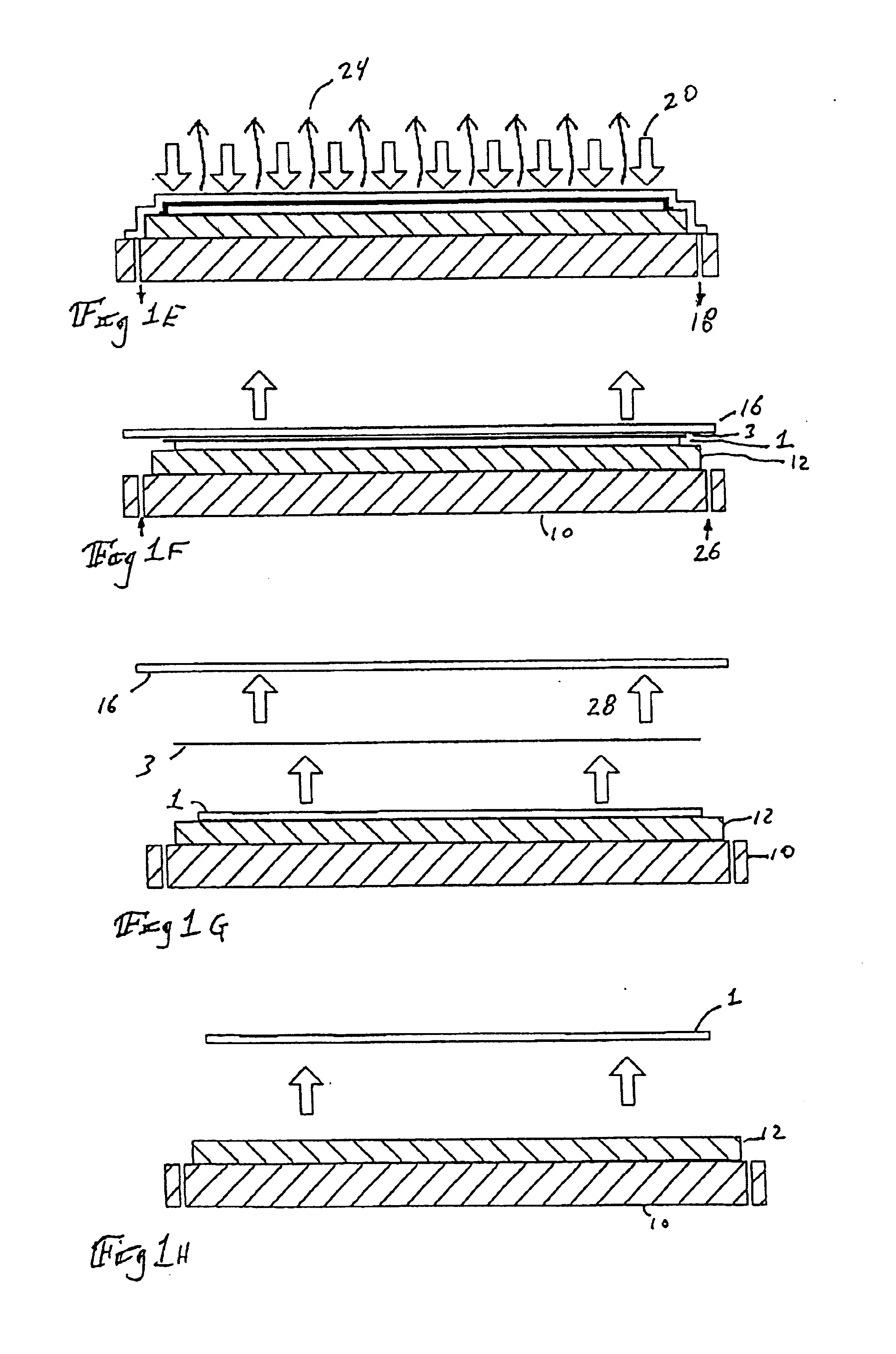Method and apparatus for forming dye sublimation images in solid plastic
a technology of solid plastic and sublimation image, which is applied in the direction of dyeing process, transportation and packaging, etc., can solve the problems of plastic flaking or peeling, plastics that are not suitable for permanent imaging, and imaging technologies suitable for use on other materials, which have not generally met with success when used to perform permanent imaging plastics, etc., to achieve superior dye sublimation imaging and prevent unwanted adhesion of dye carriers
- Summary
- Abstract
- Description
- Claims
- Application Information
AI Technical Summary
Benefits of technology
Problems solved by technology
Method used
Image
Examples
Embodiment Construction
[0048]The succeeding discussion centers on one or more preferred embodiments of the present invention, implemented by a number of components. Those having skill in the art will understand that where the embodiments enumerated herein specify certain commercially available components, these are by way of example. The principles of the present invention are capable of implementation in a wide variety of configurations and these principles specifically contemplate all such embodiments.
[0049]Having reference now to FIGS. 1A through 1H, a methodology taught by the present invention for forming dye sublimation images in substrates, particularly in solid plastic substrates, is shown. At FIG. 1A is shown a platen, 10, having superimposed thereon a passive cooling device, 12. The principles of the present invention specifically contemplate the utilization of either or both active and passive cooling devices, as will be explained later. Platen 10, in one embodiment of the present invention, is...
PUM
| Property | Measurement | Unit |
|---|---|---|
| pressure | aaaaa | aaaaa |
| temperature | aaaaa | aaaaa |
| pressure | aaaaa | aaaaa |
Abstract
Description
Claims
Application Information
 Login to View More
Login to View More - R&D
- Intellectual Property
- Life Sciences
- Materials
- Tech Scout
- Unparalleled Data Quality
- Higher Quality Content
- 60% Fewer Hallucinations
Browse by: Latest US Patents, China's latest patents, Technical Efficacy Thesaurus, Application Domain, Technology Topic, Popular Technical Reports.
© 2025 PatSnap. All rights reserved.Legal|Privacy policy|Modern Slavery Act Transparency Statement|Sitemap|About US| Contact US: help@patsnap.com



